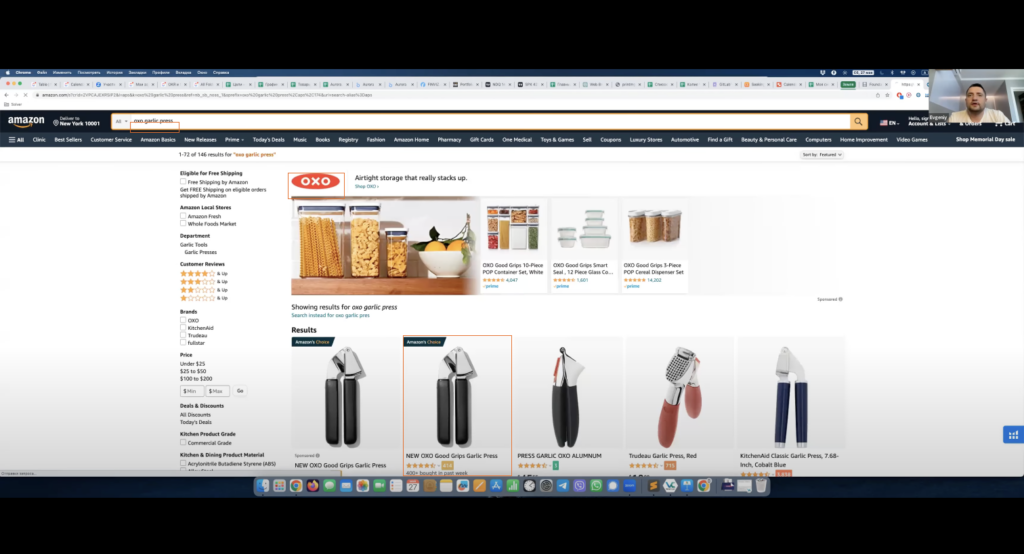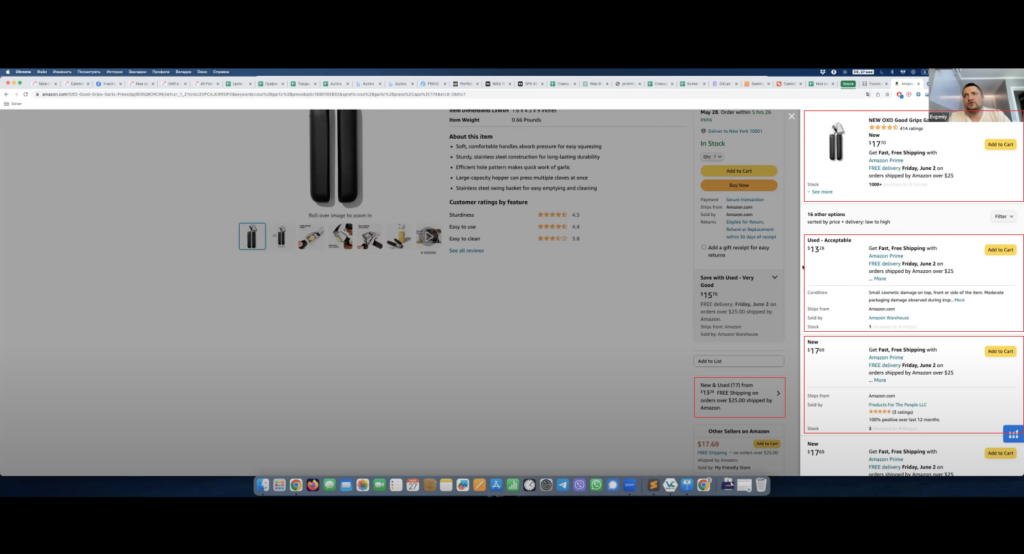Welcome to Ecommerce Camp, where today’s topic is Selling on Amazon and eBay: Basics for Beginners.
For the beginning, a few words about myself: I’m a professional Amazon seller. Right now, I’m among the Top 500 Amazon Sellers in the world.
I started in 2016, and it was much easier those days. For you, it won’t be that easy.
Selling on Amazon

You will understand the different approaches that you can use to make money by selling something on Amazon.
1. Selling on Amazon: Private Label
2. Selling On Amazon: Online Arbitrage / Wholesale


Because wholesale listings are often unchangeable for a particular seller (with some exceptions), it’s crucial to grasp that competing in this arena means contending with sellers who constantly adjust prices by a few cents at frequent intervals using automated repricers or similar tools.
To make substantial profits in this model, one must sell thousands of different SKUs.
Due to this necessity for a high volume of sales, I’m not particularly fond of this model. Moreover, succeeding in wholesale requires a significant upfront investment, making it imperative to have substantial capital.Now, let’s pivot to another model we’ll discuss shortly, such as dropshipping and flipping.
3. Selling On Amazon: dropshipping / Flipping
I’m sure many of you have heard about the Dropshipping model through various videos on platforms like YouTube and TikTok.
Many of these videos portray Drop Shipping as some kind of ‘Holy Grail,’ showcasing stories from zero to hundreds of thousands of dollars in no time.
However, I’d like to shed light on dropshipping from Amazon’s perspective.
Dropshipping
From Amazon’s viewpoint, they are not fond of dropshippers.
This is because, most of the time, dropshippers increase prices without providing any advantages to buyers. Amazon strives to maintain the lowest prices to compete with discount sellers like Walmart and other platforms.
Consequently, Amazon has stringent rules to identify and suspend dropshippers.
Over the years, as a lawyer representing Amazon sellers, we’ve handled hundreds of cases related to dropshippers, with many being permanently suspended due to this model.
Therefore, if you’re considering starting on Amazon, I highly advise against the drop-shipping model.
Flipping
Now, let’s discuss the ‘flipping’ model. This is essentially similar to dropshipping but with a different approach.
In drop shipping, you find a product, let’s say, on eBay, and list it on Amazon. Upon receiving an order on Amazon, you reorder the product from eBay and have it shipped directly to the Amazon buyer.
Conversely, in flipping, you search for a product already available on Amazon, perhaps priced at two dollars. Then, you create a new listing on Amazon for that product at a higher price, say twelve dollars. When someone orders a product at a higher price on Amazon, you purchase it at a lower price from Amazon and have it shipped to the buyer.
However, Amazon can easily detect this practice due to the use of the same addresses and details.
While some individuals have made significant profits with the flipping model, in recent years, many have faced account suspensions.
The major issue with Amazon nowadays is that when they suspend your account, they often withhold the funds from your account balance. Consequently, the current risk associated with these models, both drop-shipping and flipping, is extraordinarily high.
Therefore, my strongest advice is to steer clear of these risky methods for now.
NOTE:
This is a script of our in-depth webinar with Evgeniy Nekoz, delving into the fundamental strategies and crucial insights essential for excelling in selling on Amazon. Gain valuable insights and strategies to kickstart and optimize your presence in the world of Amazon sales.
To further assist you, we’ve made accessing this valuable resource simple. You can easily view the full video recording:

Need Specific, Targeted Advice For Your Store?
Whether you’re embarking on your first steps into the world of e-commerce or already running an established business, don’t hesitate to contact us. Our dedicated team is here to provide unwavering support and assistance throughout your entire journey.




